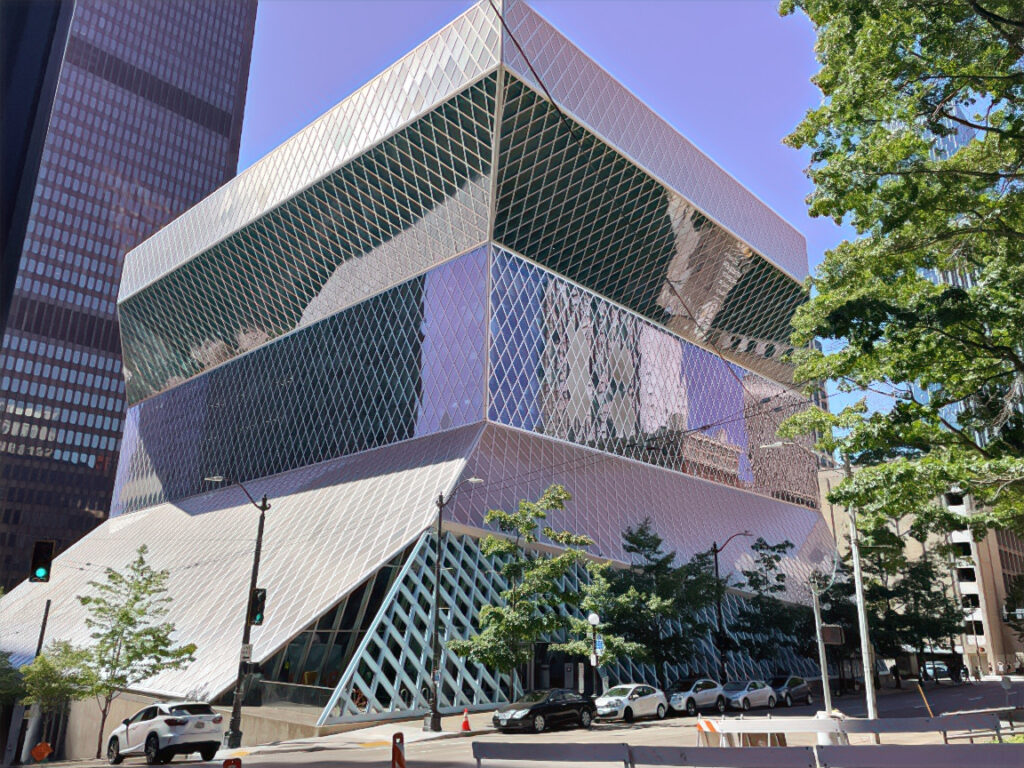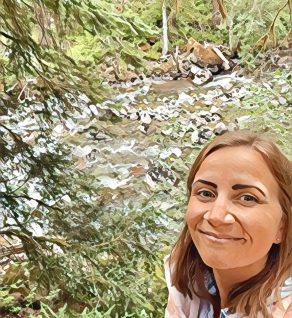Libraries often become outgrown by their collections and volume of patrons they receive daily. The Seattle Central Library is no exception. When the current building opened in May of 2004, it was the third library to be located on the same site at 1000 Fourth Avenue in downtown Seattle. The first was the original Seattle Carnegie Library that opened in 1906.
It’s hard to miss the striking behemoth. Its 11 stories are wrapped in glass and steel and nearly 10,000 windows–most of them diamond shaped. There are numerous odd angles and a lot of reflective glass. The library takes up nearly 363,000 square feet of space.
In 2007, to celebrate their 150th anniversary, the American Institute of Architects created a list of “America’s Favorite” 150 pieces of architecture. The Seattle Central Library ranked 108 (Empire State Building took the top spot).
Dutch architectural firm Office for Metropolitan Architecture (OMA) worked in conjunction with Seattle’s LMN Architects to construct this structural expressionist piece of work. The reception of the new library was initially mixed. It’s currently still mixed.
The layout of the building is innovative and beautiful and wildly confusing in certain spaces. But perhaps that’s just art imitating life–in book form. Regardless, the library is worth a stop on any bookworm’s Seattle itinerary. Plus, it’s very photogenic. I spent nearly two hours meandering and didn’t even make it to the FriendShop Gift Shop (it was closed). Here are all of the top highlights you need to see at the Seattle Central Library.
TOP HIGHLIGHTS OF THE SEATTLE CENTRAL LIBRARY
The library uses the term “level” over floor so I’ll use that here as well. If you need a visual, the library has created this handy map. And if you or your kiddo needs an artistic outlet, they’ve also created a free coloring sheet that incorporates many of the highlights I detail here.
Enter from the Fourth Street Entrance.
LEVEL 1
Entering off of Fourth Street will put you on Level 1. Note the “Fountain of Wisdom” outside the library’s entrance. This was designed by George Tsutakawa in 1960 and stood outside the previous library that occupied this space. Wisdom is always flowing when you’re at the library.
The Seattle Central Library has a variety of ways to move books throughout the building including elevators and multiple catwalks. If you look up here you’ll be able to spot a conveyor belt encased in plexi-glass that transports newly returned books to an automated sorting machine. It has sorting capabilities to make sure books are sorted and returned to all 27 branches in the library’s system. It processes roughly 15,000 items per day.
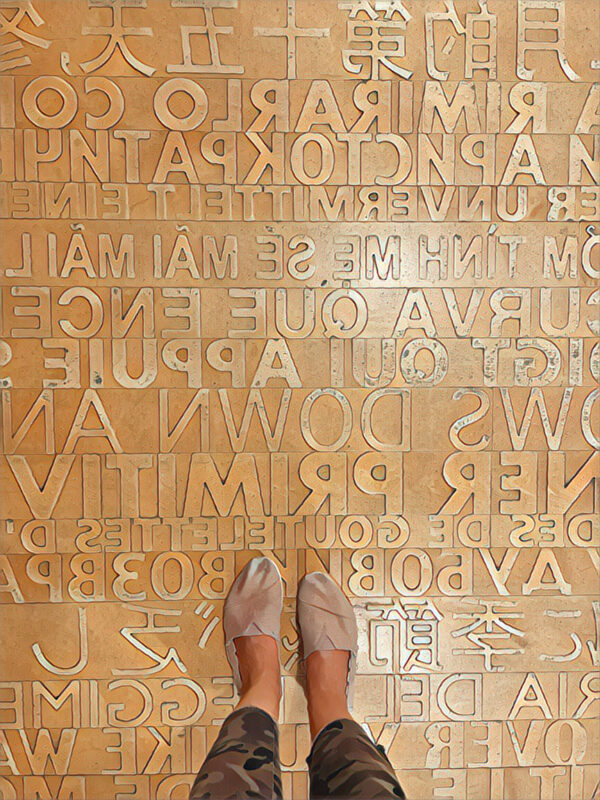
After you crane your neck to the ceiling it’s time to look down. You’re looking at artist Ann Hamilton’s wood floor that spans over the LEW (Literacy, ESL, and World Languages) collection. A 7200 square foot space, the maple floorboard contains 556 lines of inverted letterform–symbolic of how letters are laid in preparation on a printing press.
The lines contain first sentences from 1543 books in the library’s Fiction and LEW sections that were submitted by patrons and librarians and feature 11 different languages (including many from this section of the library such as Arabic, Vietnamese, Korean, and Russian). Hamilton’s purview was to remind patrons of the act of printing a book and reading words off of physical pages during a time of such technological advancement. You may also remember Hamilton’s name from her artwork at the San Francisco Main Library.

If you have children or enjoy children’s literature, don’t miss the Faye G. Allen Children’s Center before you leave Level 1. Faye G. Allen was a schoolteacher who loved reading and passed her passions down to her children who include Microsoft’s co-founder Paul G. Allen.
The children’s space is bright and features large pieces of artwork by Seattle textile artist Mandy Greer. The paper-mâchéd characters focus on three themes from folk tales: “Babe the Ox,” “The Phoenix Fairy,” and “The Magic Grove.” Greer conducted children’s workshops for inspiration during her creation process. The flooring is made of bamboo, a renewable resource.

Lastly, don’t leave Level 1 without finding 1960’s “Northwest Screen,” which was commissioned for the opening of the second library to occupy this space (it’s located behind the auditorium in the Sirsidynix Gallery).
Husband and wife team James H. FitzGerald and Margaret Tomkins created this installation using bronze, enamel, and painted glass to depict scenes from the Pacific Northwest. Standing at over 8 feet tall and 27 feet long, the screen was in storage before moving to its current home when the library opened in 2004.
LEVEL 3
Whoa, we skipped Level 2. That’s only because it’s used for library office space and is closed to the public.
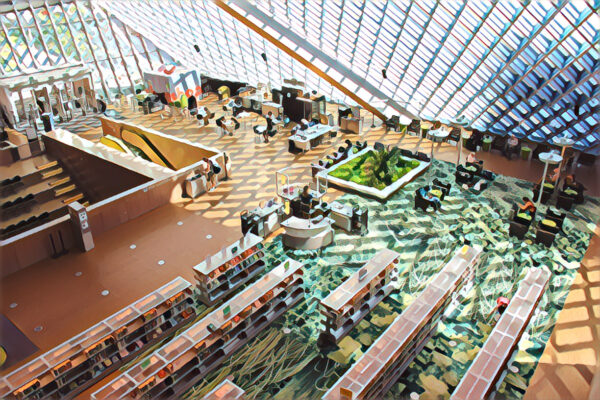
Level 3 is known mostly as the Living Room. Think of it as the main hub. Here you have a large welcoming public space that alludes to bringing the outside in with a number of plant displays and a huge carpet with plant images on it. When the living room is looked at from above it appears like a small indoor botanical garden.
There are librarians on hand to ask questions and this is where you’ll find the FriendShop Gift Shop and Chocolatí Cafe (currently closed). There’s also a small fiction section and newspapers and magazines in the center of the Living Room. You’ll want to grab a comfy chair and take in the vastness of the building from this space.

Don’t leave Level 3 without finding the “hidden” octopus mural by Seattle artist Will Schlough. This artwork nods at the Pacific Northwest’s ecology.
LEVEL 4
It’s slightly tricky to get to the red floor as you cannot arrive via escalator (which is the primary mode of transport in most other sections of the library) but rather there is a small staircase (or elevator) from Level 3 that will take you to The Red Floor.

Quite possibly my favorite space in this building solely for the fact that it seems so out of place for a public library. The red floor is only used as meeting spaces and computer labs so you’re coming here just to have a look around and take some photos. There are 13 different shades of red (did Taylor Swift design this space?) that cover the ceiling, walls, and floor.
From Level 4 take the stairs back down to Level 3 then take the brightly lit escalator (it looks like a neon light green) from Level 3 to Level 5 (you’ll notice how it skips Level 4, it’s tricky!). Inside the escalator, there are three engaging video sculptures by artist Tony Oursler. “Braincast” contemplates how information is transmitted and where libraries play a role in that transmission–through spoken, printed, recorded, and digital information as technology evolves.

LEVEL 5
The Mixing Chamber on level 5 serves as a digital offering. There are over 330 public computers available, printers, copy machines, and a reference desk. Above the reference desk there is a digital piece of art by Geroge Legrady called “Making the Invisible Visible.” Like numbers flying on the Stock Exchange floor, this digital work shows you in real time how many books are being checked out through the library system.
LEVELS 6-9
For whatever reason, when I heard “book spiral” I imagined a DNA type helix that shelved nonfiction books. I was so convinced that this was what I was looking for, I kept looking for it even while I was in the midst of the actual book spiral. Don’t be like me.

The book spiral at the Seattle Public Library houses the library’s collection of nonfiction books between three floors. It’s an actual spiraled walkway, or ramp, that’s at a two degree slope. So while it feels like you’re walking relatively level you’re not. And for reasons unbeknownst to me, I tripped over my own two feet a lot. Please let me know if you do the same.
Glance at the ground every now again so you can see how you’re walking among the Dewey Decimal System. You’ll notice that each new section is announced by black and white rubber tiles embedded into the floor.

There is a second “hidden” mural by WIll Schlough. This time it’s space themed and plays homage to the nonfiction books you’re surrounded by and science-fiction books by Pacific Northwest writers.
Level 8 houses the library’s gallery space, with rotating exhibits that focus on a variety of themes including the Pacific Northwest experience.
If you like pouring over maps with as much energy as a global navigator from the 18th century (like I do) then be sure to stop off into the Maritz Map Room on Level 9.

This small room contains over 40,000 reference and circulating sheet maps as well as over 100 atlases. The collection includes U.S. Geological Survey Topographic Maps, NOAA Nautical Charts, hiking maps, and maps of National Parks, Monuments, and Nature Reserves.
LEVEL 10
A cozy reading room that seats 400 greets you on Level 10. From this level you’ll also find the highest viewpoint in the library that stretches all the way down to the Living Room on Level 3.

While it was closed when I visited (on a Saturday), the Hugh and Jane Ferguson Seattle Room offers thousands of items spanning Seattle’s history including manuscripts, photographs, books, city directories and even unique items like restaurant menus and yearbooks. While these items do not circulate, you could spend hours here pouring over Seattle’s history.
A clever piece of art by Lynn Yamamoto hangs from the black stairwell wall. “Of Memory” is an old card catalog that has been cast in polyester fiberglass. A fitting name for a bygone library era.
If you love visiting public libraries save our self-guided tour of the LA Central Library.
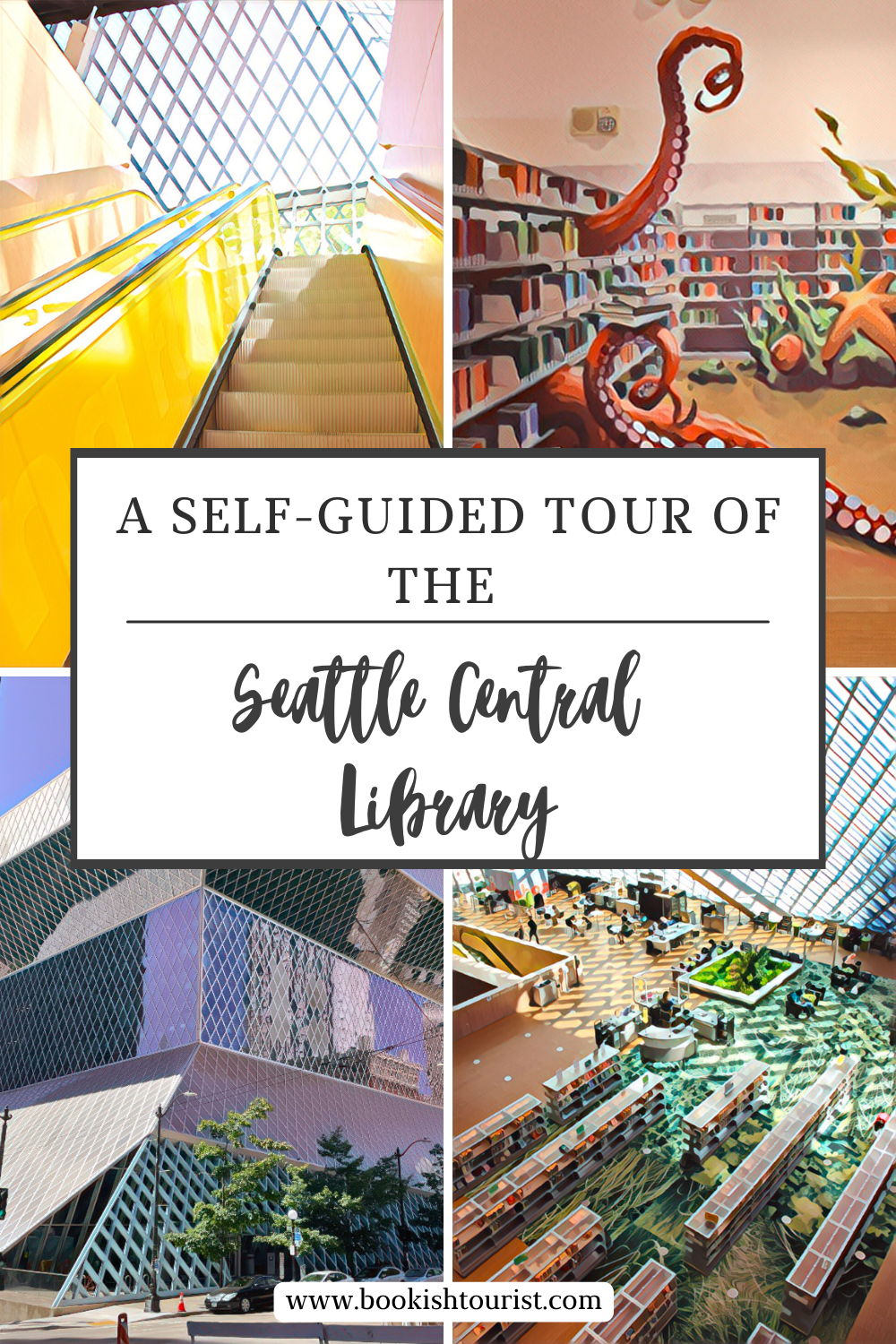
Those are all of the best highlights from the Seattle Central Library! Did we miss something? Let us know in the comments.
